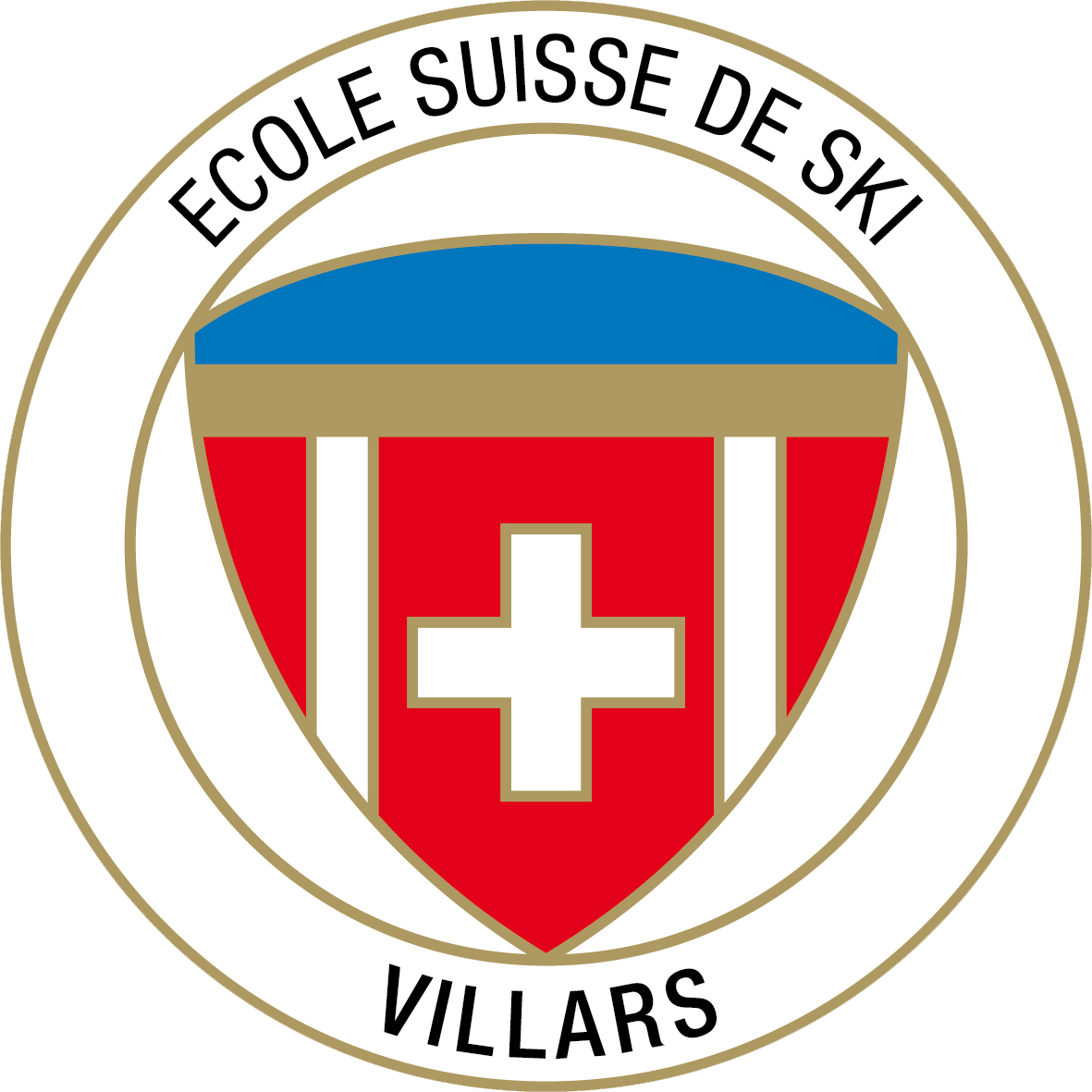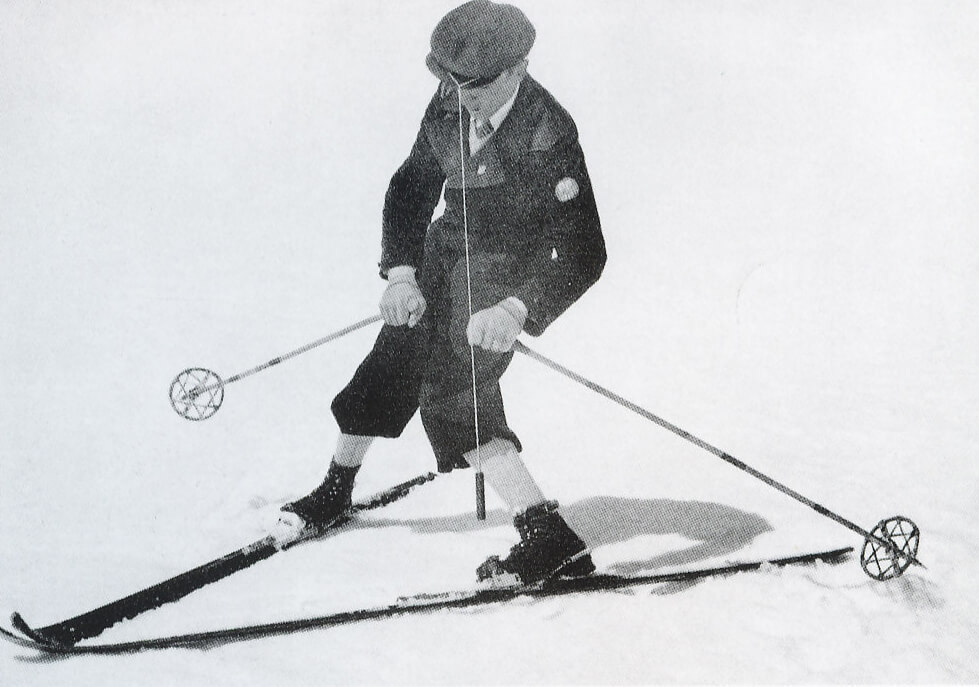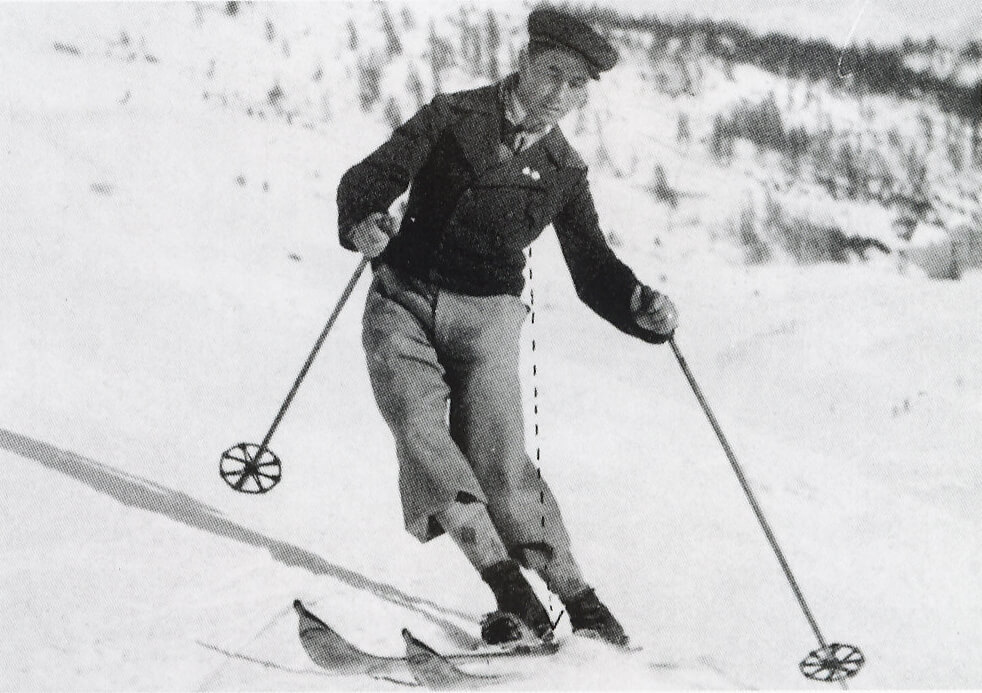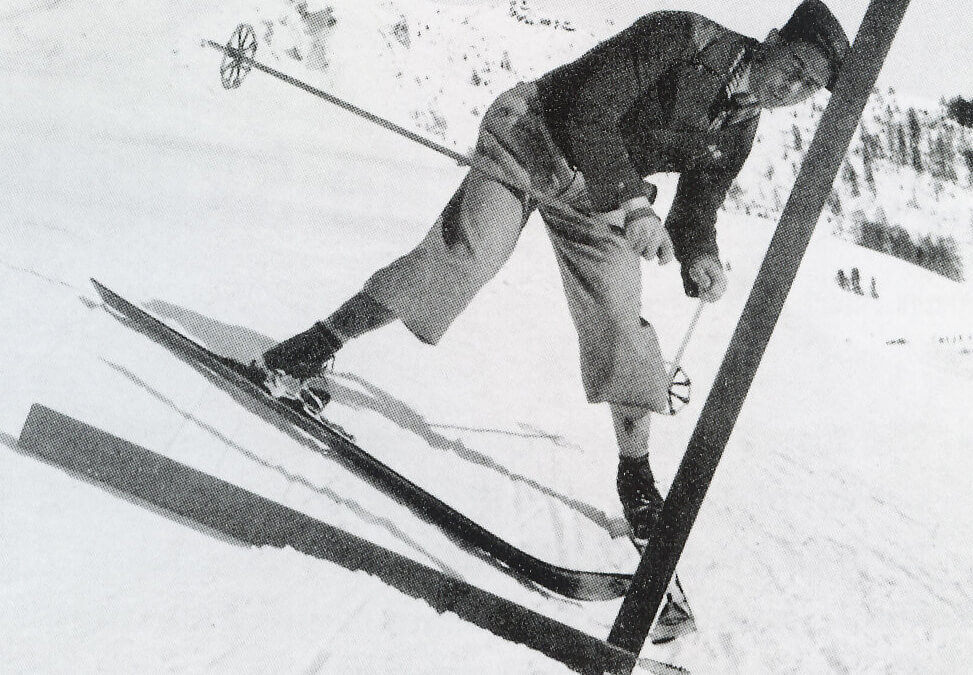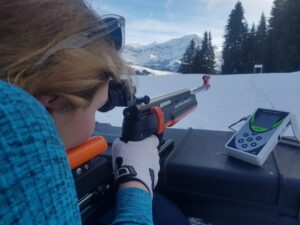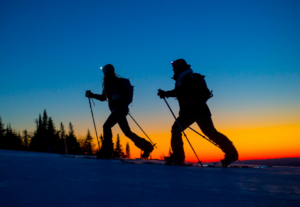The ski instructor profession in the 1930s
At the time, the profession of ski instructor was not yet well structured, and was mainly a winter supplement for farmers and construction workers. Their skills appear to have been judged more based on their results in the numerous ski competitions organized in Bretaye than on the content of their technical teachings or their pedagogy. Another major difficulty for these new teachers was, of course, their lack of knowledge of Shakespeare’s language. But their enthusiasm and passion for skiing seem to have made up for their lack of language skills.
The only skiing method of that time (the so-called Arlberg method) aimed more at codifying the various movements then in vogue (Telemark, Christiania) than at the manner of teaching them.
The excerpt below from a student’s notebook shows the good will of the first instructors, but also the difficulties they must have had in conveying a coherent technical teaching (all the more so in a foreign language):
Christiania: Skis parallel, feet together, knees together. At this point, press down hard on the heels, put the ski straight on the edge, move the ski straight forward. Put your weight on the left ski, stick back on the right. Look back, turn the hips, return the skis to parallel and hold this position.
Telemark: To be practiced in fresh snow. Push down on the heels, bring the right ski forward, bend the right knee into a fencing position, place the left foot on its toe. Turn the right heel to the left, the left ski follows imperceptibly. Turn the body slightly to the right by the hips, raise the torso, turn them progressively to the right.
Reading these lines, it’s easy to understand why all the old-timers agree that until the late forties, there were as many teaching methods as there were instructors.
